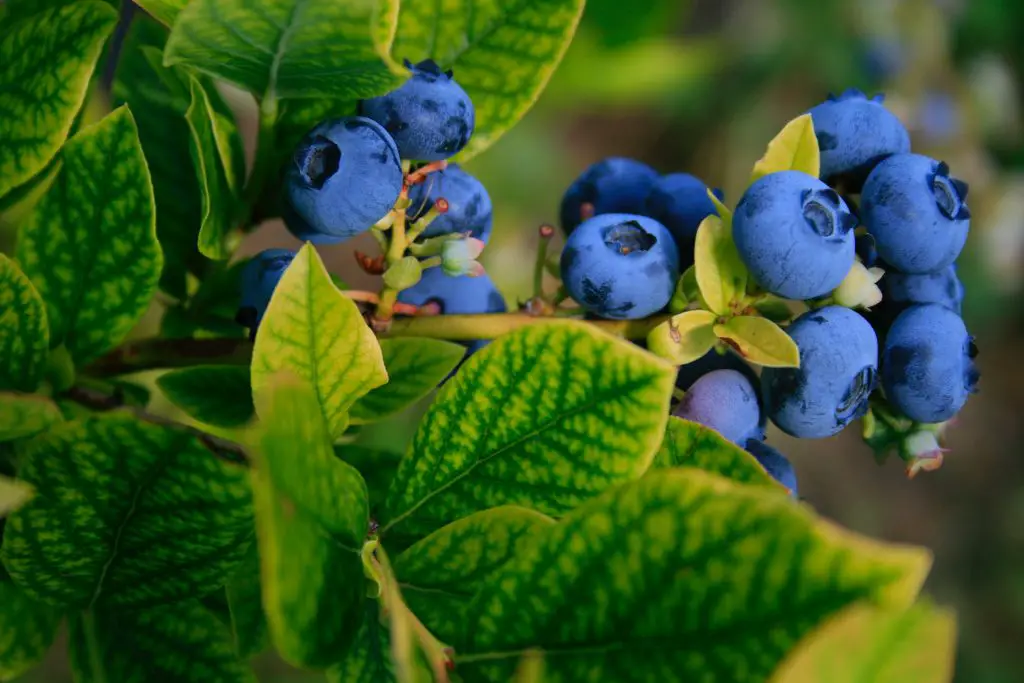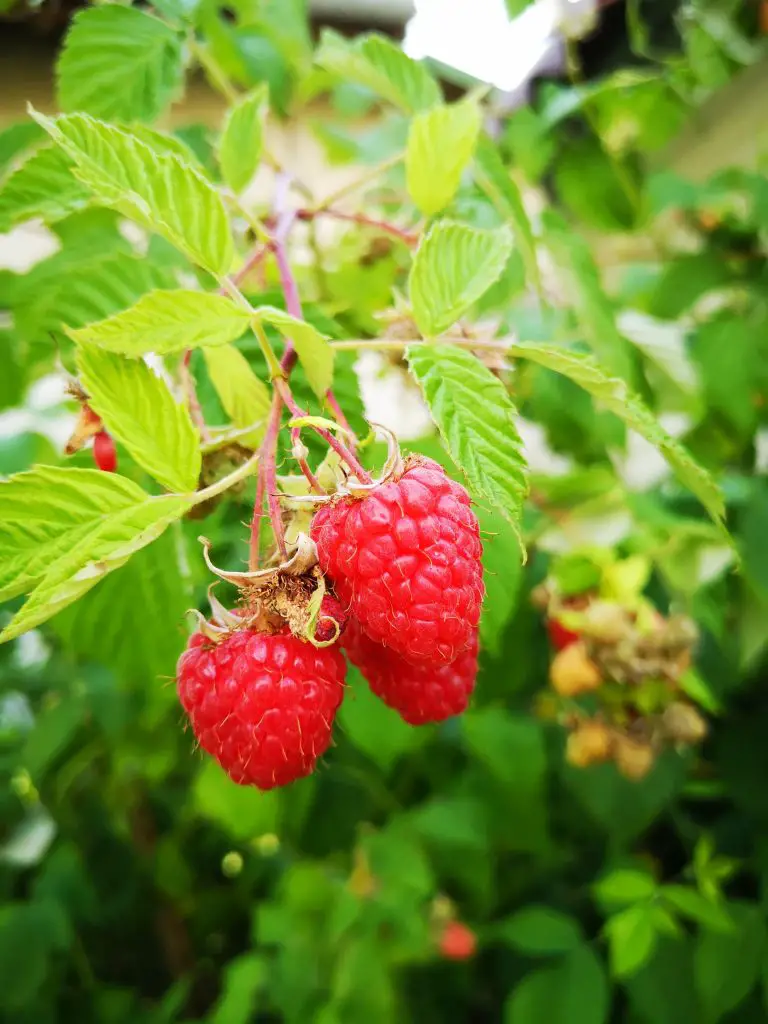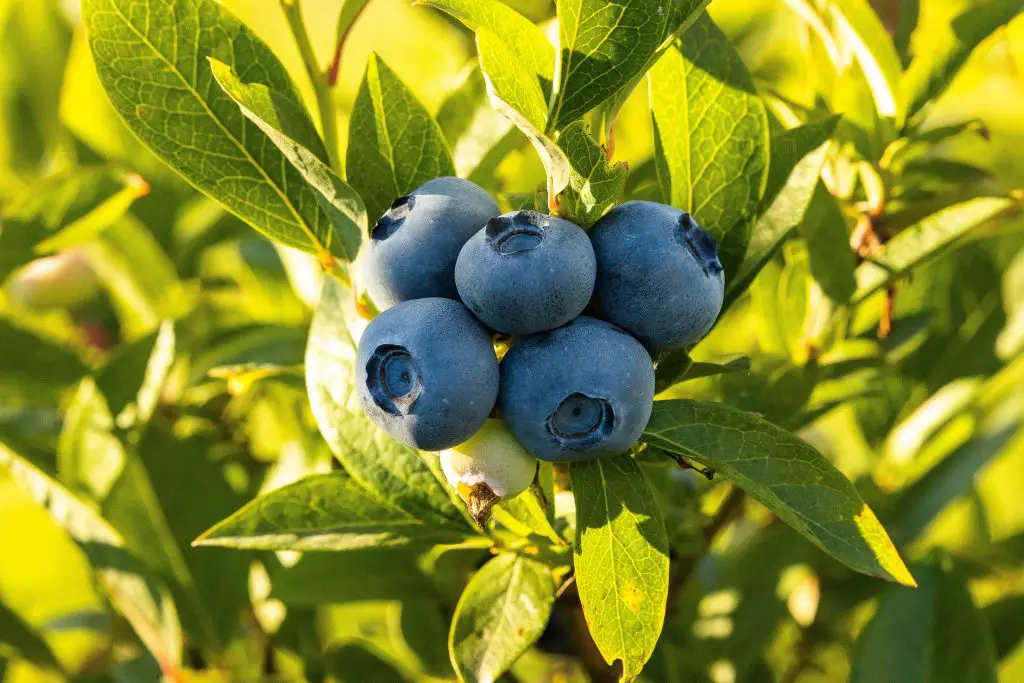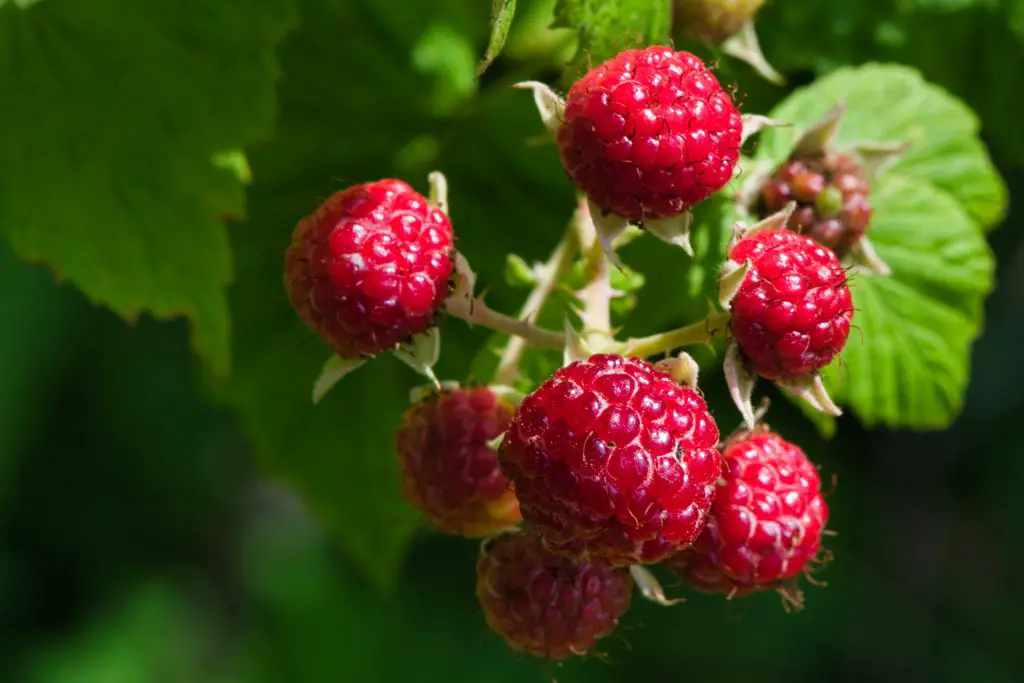Blueberries vs Raspberries: What Is The Difference? Persons who enjoy seasonal fruits and vegetables often come across challenging decisions in the produce section in terms of what fruits and vegetables to buy. Sometimes customers will decide between blueberries and raspberries, and in some cases, these customers may not be 100% sure what the difference is.
There is a large difference between blueberries and raspberries in terms of flavor, appearance, and the nature of the plants that produce each of the fruits. Raspberries are aggregate fruit that is produced from canes that is red in color and sweeter than blueberries. Whereas blueberries are as the name suggests are blue in color and produced on a small shrub.
The degree of difference in the flavor difference is much more obvious when you grow raspberries at home because they can be picked when they are fully ripe. Commercially produced raspberries are picked prior to being fully ripe in order to maximize the shelf life of the fruit. Blueberries generally have a much longer shelf life than raspberries.

Nutritional differences between Blueberries and Raspberries
Both berries are healthy options with both fruits being among the top 10 fruits in terms of antioxidant value. Blueberries have twice the level of antioxidants found in raspberries, according to an article published by webmd. However, raspberries still have a higher antioxidant level than most common fruit such as apples, citrus fruit, and stone fruit.
Antioxidants are molecules found in plants and animals that help protect against cell damage caused by unstable molecules known as free radicals. Free radicals can be produced inside the body or absorbed from food or the environment. Free radicals are believed to contribute to aging and to the development of many diseases, including cancer and heart disease.
The other key advantage that blueberries have over raspberries is that they have significant amounts of essential amino acids. Amino acids are the building blocks of protein in plants and animals. These organic compounds can be found throughout your body in chemical reactions that help maintain normal body functions. Some of these can be made by your body however, those that can’t, must come from your diet and are referred to as essential amino acids.

Blueberries also contain a high amount of vitamin K. Your body requires vitamin K to form a clot, which is a plug of protein that blocks excessive bleeding. Vitamin K also helps your body to form bone and stimulate cell growth.
Raspberry on the other hand has more dietary fiber than blueberries, around half the amount of sugar and higher folate levels.
Additionally, both raspberries and blueberries are excellent sources of vitamin C, but fresh raspberries have more vitamin C than fresh blueberries. Vitamin C is an essential nutrient that the body cannot make itself. It is important for the formation of connective tissue and blood vessels, the absorption of iron from plant foods, and the normal functioning of the immune system. Vitamin C also helps to keep the gums healthy and the eyes and skin healthy.
This means that raspberries are more suited to diabetics and those women that are pregnant or attempting to get pregnant. Whereas blueberries are recommended for general good health.
Differences Between Growing Blueberries and Raspberries
The blueberries and raspberries are grown on distinctly different plants and have different fruiting seasons though there is some overlap. In my view, raspberries are significantly easier plants to grow compared to blueberries which tend to be less forgiving. I can honestly say that I have killed a few plants.
Raspberry plants are prolific plants, that are often considered invasive, produce fruit on canes from summer through to autumn. The plant produces new shoots from root systems that sprawl under the ground.
From these roots, canes pop up readily and can invade other parts of the garden if you are not careful. The size of the canes varies in height from 4 ft to 20 ft depending on the type of raspberry plant being grown.

The type of raspberry is generally divided into 2 groups summer fruiting and autumn fruiting varieties. Summer fruiting bushes produce fruit on canes that grew the year before whereas autumn fruit varieties produce fruit on the current year’s canes.
As the summer fruiting canes grow over a period of 2 years they produce significantly longer canes that need a lot of support. Whereas autumn fruiting canes only have a single season, grow and then produce fruit which is why they also fruit later in the season.
Blueberry plants on the other hand are a perennial shrub that is classed as either a lowbush or highbush variety that varies in height from 1 ft to 13 ft. The Lowbush blueberries are small with peasized berries, whereas highbush blueberries are larger with berries.
Blueberry plants are relatively challenging to grow as they are fussy about the soil conditions they are exposed to. The blueberry plants prefer acidic soil with acidity between 4 and 5 pH, in many regions the soil conditions need to be adjusted.
However, they are a relatively hardy plant with some plants being grown in places like Alaska, Maine, and parts of Canada. Raspberry plants are also relatively hardy but some Summer varieties, in particular, are vulnerable to late frosts. To overcome these issues frost blankets need to be applied. Raspberries can grow in zone 4 to 10.

How Much Do Blueberry And Raspberries Plants Produce?
Raspberry plants generally produce more fruit faster than blueberries. The autumn raspberry plants will produce in the first year because they produce fruit on the same years’ canes whereas summer fruiting will produce in the second year. The average amount of fruit that is produced by one raspberry plant is estimated to be around 7 kg (15 lb) though it may vary depending on the variety.
The Royal Horticultural Society tested 27 varieties over a 3 year period and found the volume of Raspberries varied between 2.1 and 14.6 kgs (4.6 to 32 lbs) with Summer fruiting varieties generally producing higher yields than Autumn fruiting varieties. To see the details of the varieties tested click here.
Whereas the Blueberry plants typically produce around 8 lbs (4 kg) of fruit per season though this can vary. However, to produce this volume of fruit the plant must become established in your garden which normally takes around 4 years.
The reason for this is that Blueberries produce fruit on stems that are between 1 and 6 years old with the stems that are 3 to 4-year-old being the most productive. As a result of this, it will normally take a couple of years before you get your first harvest.
To ensure that the plant remains productive over time it is important to regularly remove old stems that have become unproductive.
Raspberry plants also require annual pruning to maintain fruit production. Autumn varieties are the simplest to maintain as plants need to be cut to the ground at the end of the season. For summer fruiting plants only the 2-year-old canes need to be removed. The remaining canes, which can get up to 20 ft long need to be tied to a support structure at the end of the season. To read more about click here.
Relevant Articles
How Much Does One Blueberry Bush Produce?
How Many Raspberries Will One Plant Produce?
Are there different types of raspberries?
What Are The Easiest Berries To Grow?
